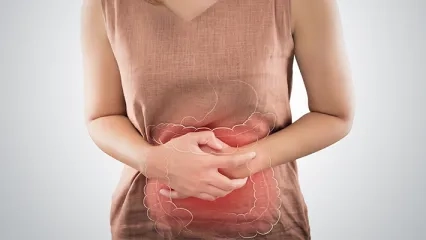Alo Yeditepe
Alo Yeditepe
Gallbladder Stones
What Causes Gallbladder Stones?
Gallbladder stones are a condition that occurs more often with high cholesterol, that is, with a high level of fat in the blood. However, in people with certain blood diseases, stones may occur in the gallbladder due to the accumulation of "bilirubin" substances. Gallbladder stones can be single or multiple.
Who Suffers from Gallbladder Stones?
Gallbladder stones are more common in women. However, this does not mean that gallbladder stones will not be seen in men. It would be more correct to say that “Women experience gallbladder stones more than men.” Middle-aged women of childbearing age, especially women who have given multiple births, are at risk for gallbladder stones.
Why Are Gallbladder Stones More Common in Women?
Gallbladder stones are more common in women. The main factor in the emergence of this situation is hormonal changes. Changes in estrogen and progesterone hormones that occur during pregnancy, breastfeeding, and lactation in women also affect the gallbladder and make it prone to stone formation in the gallbladder.
It is known that genetic features are also effective in the formation of stones in the gallbladder. It is known that women with a history of gallbladder stones in their first-degree relatives, such as mothers or aunts, are more prone to this problem.
What Complaints Do Gallbladder Stones Cause?
Gallbladder stones do not always cause complaints. For many people, this problem seems to progress silently. In fact, in 90% of patients, gallbladder stones progress silently without any complaints. However, when looking at people who have reached the age of 60, it is seen that about 10 percent of them actually have silent gallbladder stones. Stones that do not impair the patient's quality of life and do not cause pain are not intervened.
When to Treat Silent Gallbladder Stones?
In some cases, it may be necessary to intervene in silent gallbladder stones. In the case of calcification in the gallbladder wall, defined as a porcelain gallbladder, if there are polyps in the gallbladder and if polyp formations are increasing, intervention and gallbladder removal are required. Because in this case, there is a risk that it can turn into a gallbladder tumor in the long term. Silent stones can sometimes cause complaints and require intervention.
Severe pain in the upper part of the abdomen, yellowing under the eyes, and complaints of fever may be an indication that there is inflammation in the gallbladder and even that the stone has fallen into the bile duct. In this case, intervention is required.
Are Gallbladder Stones Dangerous If Undetected?
Unnoticed stones mean that they do not cause complaints, and this does not cause any problems. However, if complaints occur, a specialist physician should see the patient. This situation, which is more common in women, starts especially in middle age and may show familial characteristics. The appearance of yellowing under the eyes indicates that the stone has fallen into the bile duct and needs urgent intervention. In this case, the gallbladder duct should be cleaned with the procedure defined as ERCP.
How to Tell If There Is a Gallbladder Stone?
It is not possible to detect silent gallbladder stones with blood tests. These stones can only be detected by ultrasound. However, stones that have fallen into the bile duct or caused inflammation in the gallbladder can be detected by routine blood tests.
Should Gallbladder Stones Be Treated Necessarily?
If it is a silent stone and if the patient does not have any other discomfort that may cause a gallbladder tumor, the gallbladder stones are only followed without intervention. However, in case of any complications such as falling of the stone into the duct, inflammation of the pancreas, or inflammation of the bladder, removal of the gallbladder may be brought to the agenda.
Why Not Just Remove Stones in Gallbladder Stones?
In the treatment of gallbladder stones, the entire organ is removed, not the stone. Because starting to form stones means that the gallbladder does not function well. In other words, it means that it will cause disease by forming stones in the long term. Therefore, it is preferred to remove the gallbladder to avoid this situation. The gallbladder is removed by laparoscopic method. After this procedure, which is performed by opening very small incisions, the gallbladder is removed, and the diseased organ is eliminated.
Does Gallbladder Removal Cause Long-Term Damage?
One of the subjects that patients are most curious about is the question of “whether the removal of the gallbladder will cause problems in the later periods”. Mild diarrhea may be experienced in the first period after the gallbladder is removed, as the body cannot concentrate on the bile salts. Apart from this, the patient does not encounter any serious problems. Because the organ that produces bile is the liver, production continues and therefore no deficiency occurs in the body. In addition, a healthy gallbladder is not removed, but a diseased and dysfunctional gallbladder is removed. Therefore, the patient does not experience any problems after the removal of an organ that has lost its function.
How Does the Presence of the Stone in the Gallbladder or Bile Ducts Affect the Treatment?
The treatment of gallbladder stones is usually carried out by removing the gallbladder. The treatment of stones in the bile duct is carried out endoscopically, with a method called ERCP.
ERCP procedure is an endoscopic cleaning of the bile duct and ERCP does not replace surgery. The purposes of both are different.
ERCP aims to clean the bile duct and open the bile duct to ensure the flow of bile. If necessary, a stent is placed to ensure the continuity of the flow. With the ERCP method, only the bile ducts are intervened, and the gallbladder is not touched. Laparoscopic removal of the gallbladder is a different surgical procedure.
Can Gallbladder Stone Surgery Be Performed in Elderly People?
There is no need to intervene in the silent stone in elderly people. However, if these stones fall into the duct or cause inflammation of the gallbladder, intervention may be necessary. In such a case, the age of the patient does not constitute an obstacle. If a 70-year-old person is found suitable for surgery in general health controls, the procedure can be performed. In this case, the patient's heart, lungs, and all other controls are evaluated by the council formed by physicians from different fields of specialization, and a decision is made on the approach to be applied.
After the patient's risk level is determined, all information is shared with the patient and their relatives, and the treatment most appropriate for the patient's quality of life is used.
Do Gallbladder Stones Recur After Removal?
Stones in the bile duct may recur after removing them. However, if the duct is opened well, its recurrence is not expected. However, the patient needs to pay attention to his/her lifestyle. After the stones in the bile duct are removed, the patient should pay attention to his/her diet, exercise, and especially avoid fatty foods.
Can Children Have Gallbladder Stones?
Gallbladder and bile duct stones are also seen in children. Since gallbladder stones are familial, they are more common especially in children with a family history or those with blood diseases. However, being overweight can also pose a risk for gallbladder and bile duct stones in children. It is more common in children during adolescence.
Gallbladder stones in children are treated similarly to adults. If gallbladder stones give symptoms and cause pain, indigestion, yellowing, or gallbladder inflammation, then the bladder may need to be removed. If the stones have fallen into the bile duct, treatment is carried out by the ERCP method.
Does Having Gallbladder Stones Cause Other Diseases?
It is known that stones falling into the bile duct, not gallbladder stones, can cause pancreatic inflammation. Stones in the gallbladder are more common in people with chronic diseases, such as people with diabetes. In these patients, silent stones are not intervened. In case of the occurrence of conditions that will disturb the patient, intervention is made.
Is There an Effect of Nutrition on Stones in the Gallbladder or Bile Ducts?
It is known that diet poses a risk for gallbladder and bile duct stones. It is more common in people who eat a lot of fat and choose a diet rich in animal foods, than those who eat a diet rich in vegetables and fruits, called the Mediterranean style.
Being overweight is a risk factor on its own. However, the tendency of the gallbladder to form stones increases in people in their 40s, women, those who are obese, have given multiple births, and have a long lactation period, that is, people whose hormone levels have changed a lot.
This content was prepared by Yeditepe University Hospitals Medical Editorial Board.
”
See Also
- What is a Liver Transplant, How is it Done? and Who is it For?
- Does Secondhand Smoke Increase the Risk of Breast Cancer?
- What is Gallbladder Surgery?
- Colorectal Cancers and Treatment Methods
- Patched Solution for Umbilical Hernia
- What are the Symptoms and Treatment Methods of Cirrhosis?
- Breast Cancer Diagnosis and Treatment Methods
- Swallowable Gastric Balloon
- What Are the Symptoms of Gallbladder Stones? How Is It Treated?
- 3 Major Developments Shaping Treatment in Colon Cancer
- Can Weight Loss Despite Not Dieting Be a Sign of Cancer?
- The Biggest Obstacle to Early Diagnosis of Breast Cancer: LACK OF INFORMATION
- Serious Risk Factor for Colon Cancer: Heredity
- He Came to Turkey to Get Rid of the Colostomy Bag
- Breast Protective Surgery Is Not Recommended in the Treatment of Multifocal Breast Cancer
- Does Breast Cancer Risk Decrease During Pregnancy and Breastfeeding?
- Breast Cancer Incidence Age Is Decreasing Day by Day
- Early Detection Is Cancer's Most Powerful Enemy
- Breast Cancer Has Dethroned Lung Cancer for The First Time! But, Why?
- Emotional Stress May Affect Risk of Recurrence in Breast Cancer
- Although Her Fears Prevented Her from Going to the Hospital, She Managed to Beat Breast Cancer at the Age of 70
- Age of Breast Cancer Prevalence Falls, yet Mortality Declines
- Breast Cancer Screening Applications Decreased by 10% Before the Pandemic
- Facts About Breast Cancer
- Liver Cancer (Tumor) and Treatment
- What Is Appendicitis?
- Hemorrhoid Treatment
- Questions About Gastroenterology Surgery
- Surgery for Breast Cancer and Breast Aesthetics Can Be Performed Simultaneously
- What are the Types of Obesity Surgeries?
- Questions About Obesity Surgery
- A New Era in Obesity Surgery
- Overweight
- Are Obesity Surgeries Risky?
- New Study Surprised: “Mortality Increased in Breast Cancer Cases Under the Age of 40”
Alo Yeditepe








